Varicose veins are a common disease that develops in many adults.
According to statistics, this disease develops in women more often in men.Such veins appear on their feet and become more popular over their age.
Moreover, the article note important events about varicose veins, the corresponding photos are given to better understand how they look, what it is and how to treat them.
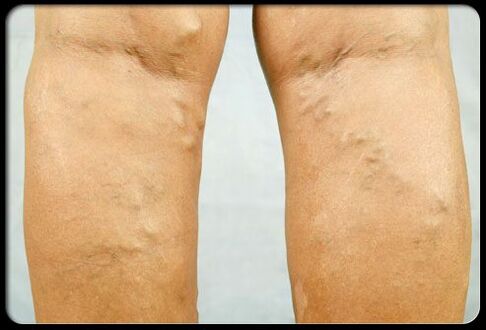
What is varicose veins?
The expanded veins are abnormally expanded, most often developed on the legs.Yes, as a rule, blue, purple or skin.
They look like prolonged, twisted and protruding blood vessels that can protrude on the skin surface.
What are the spider -shaped veins?
Aracular veins (also known as Telangectasia or vascular, blood vessel mesh) are an accumulation of small blood vessels, developing near the surface of the skin.
They are usually red, blue or purple, with the appearance of the web.The most frequent stars are found on the face and legs.
What leads to the development of varicose veins?
Varicose veins are caused by structural disorders in blood vessels.
The veins carry blood from different parts of the body back to the heart.They have some single -directional valves to avoid reverse blood flow.
For some reason, these valves may be damaged, resulting in blood flow inside the veins.The long stagnation of blood increases the pressure inside the vein and weakens the walls of the blood vessels.
Then, due to the stagnation of blood and the expansion of the affected blood vessels, spider veins and varicose veins develop.
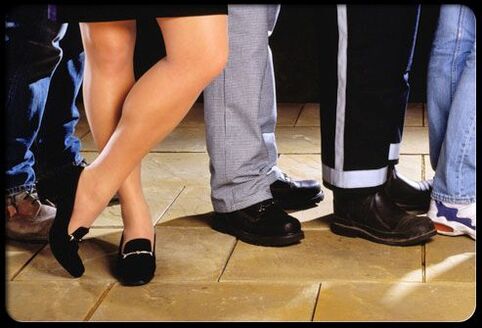
Reason for development?
There are many different risk factors that increase people's chances to develop varicose veins.
They include:
- Age
- Stand long or sit,
- obesity,
- pregnant,
- Hormone therapy,
- take birth control pills,
- injury,
- Previous surgical interventions in veins,
- Anamnesis of venous thrombosis,
- Family history.
Symptoms of varicose veins
Usually varicose veins have no symptoms and other signs, except for their unwanted cosmetics.However, some people may undergo certain symptoms from varicose veins.
Symptoms may include:
- swelling,
- Feeling around,
- It was a boring pain,
- burning,
- itchy,
- serious level,
- Tingle or convulsions in the leg.
These symptoms often worsen after sitting or standing.Individuals can also develop brown skin and finally Trophic ulcer.
Complications of varicose veins
If you do not treat varicose veins, this can lead to the following:
- Trophic skin ulcer develops.Open wounds, as a rule, appears on the legs.Sometimes they can lead to the development of soft tissue infections.
- Cloudings of developing veins (surface thrombosis).
- Bleeding from veins is possible.
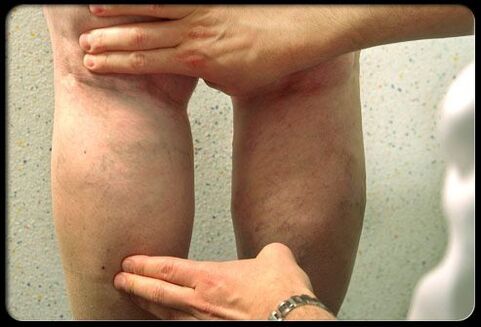
Diagnosis
You can diagnose the presence of varicose veins by using the affected area thoroughly, as prescribed, on the foot.
The inspection includes the visual and touching test of a problematic area.Special attention is paid for areas that are red, swollen, change skin color and trophic ulcer.
Home treatment
There are many different methods that can be applied at home to help weaken some symptoms if they appear.Conservative methods can also help prevent any hidden complications.
Compressive
Compressed socks are a simple method to treat at home to help reduce the symptoms in the leg.
They improve blood circulation, increase pressure in the legs.These socks have many types and strengths of compression.Your doctor may suggest a few suitable for you.As a rule, sold in pharmacies.
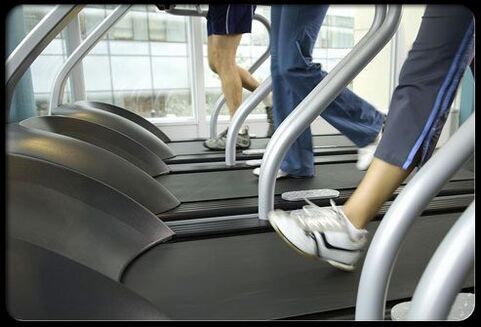
Change in lifestyle
The program of regular physical exercises and weight loss may help reduce the symptoms of spider -shaped veins and veins.
People buried should avoid standing or sitting for a long time, lifting their legs while sitting or sleeping to improve blood circulation and reduce swelling in the leg.
Sclerotic therapy
Sometimes treating varicose veins at home may not give the desired results.In these cases, more specialized medical procedures may be done, depending on the position and size of the abnormal veins.
These medical procedures are usually carried out for cosmetic reasons.
Sclerosis is a common technique that can be performed by a doctor;It is very effective in removing most spider veins and some varicose veins.
In this process, no anesthesia, the doctor offers a liquid solution directly inside the vein, which leads to its eye gluing and eventually disappears.To achieve optimal results, some sessions may be necessary.Potential side effects include bruises, swelling, bleeding, infection and skin color change.
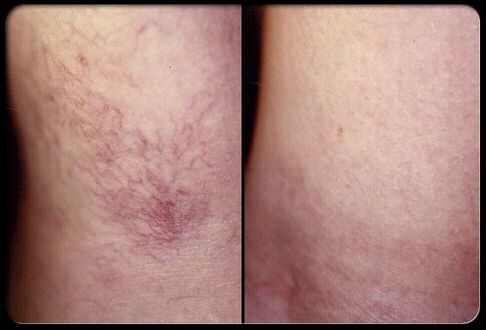
Sclerotic therapy: before and after
Treatment with sclerosis may need a number of sessions, and the healing time may vary, depending on the person.
Basically, spider veins began to disappear within 3-6 weeks after treatment, while varicose veins to improve a few months.
Laser treatment of varicose veins
Laser therapy is another alternative medical procedure that the doctor can also be done.Sometimes it is used in addition to hardening therapy to maximize the results.This technique is most effective for Arachnid veins and small varicose veins.
For patients who are afraid of Kim, laser therapy offers an alternative to treatment, although your doctor can advise you on which treatment is better in your specific situation.
Laser therapy uses a series of concentrated light, heating the blood vessels, eventually disappearing.
Potential side effects include redness or mild tumor around the treatment area, changing skin color, blisters and scars rarely.
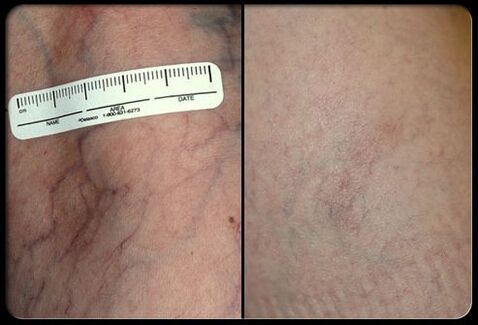
Laser therapy is a recent method of development to treat varicose veins, in which the affected area is treated by light pulses of different scope.
Laser therapy: before and after the procedure
As with hardened therapy, to achieve optimal results, some laser treatment sessions are often necessary.Improved can take several weeks to several months after treatment.
Surgical intervention into veins
Acting is a treatment option for more serious cases of varicose veins.Your doctor will discuss with you surgical procedures that may vary to help decide which varicose veins to treat varicose veins are optimal for you.One of the surgical methods is to tie the veins and remove them through the skin chopping.
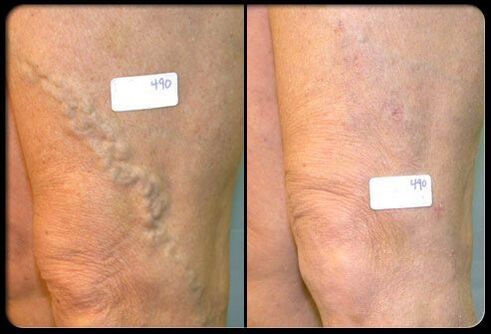
Activity on Vienna: before and after treatment
The tie and elimination of veins often successfully eliminate symptoms and aesthetic problems of varicose veins.This activity is carried out according to local anesthesia, spine or generally in health organizations.
The full recovery of this surgical intervention, as prescribed, takes about 2-4 weeks.The hidden complications may include infections, bleeding, scars, nerves damage, deep vein thrombosis, adverse reactions to anesthesia.
Intravenous laser therapy
Intravenous laser treatment is a minimal invasive surgical procedure including laser irradiation through a thin conductor that is inserted into the affected veins, causing its narrowing.
Intravenous laser treatment is characterized by 98% of the initial success.This procedure is carried out on the basis of outpatient patients under local anesthesia or using mild sedatives.
The patient reports less pain and recovers faster with intravenous laser treatment therapy, compared to sparkling and removing surgical veins.
Cutting radio frequency
The cutting of intravenous radio frequency is a minimally invasive procedure similar to intravenous laser therapy.
Instead of using laser light, a catheter is introduced inside the vein that applies radio frequency energy, leading to heating and narrowing the affected ship.
As with intravenous laser therapy, patients report more pain and recover faster, than wearing clothes and removing surgical veins.
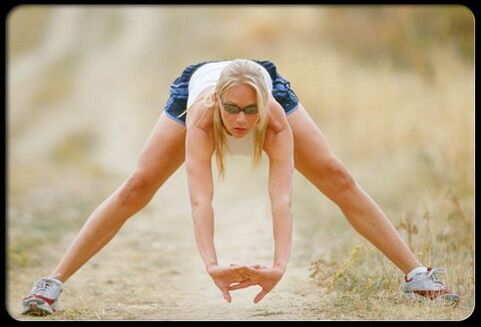
Prevention of varicose veins
Although varicose veins can not always be prevented, there are many different methods that you can do to reduce their chances of development.
Prevention tips include:
- Regular physical exercises;
- Maintain healthy weight;
- Avoid sitting or standing for a long time;
- Avoid crossing your foot in the sitting position;
- Lift your legs higher during relaxation;
- Do not wear clothes to tighten your body on the waist, groin and legs.
Dear friends.The article is not a medical council and cannot serve as a replacement for a consultant with a doctor.












































